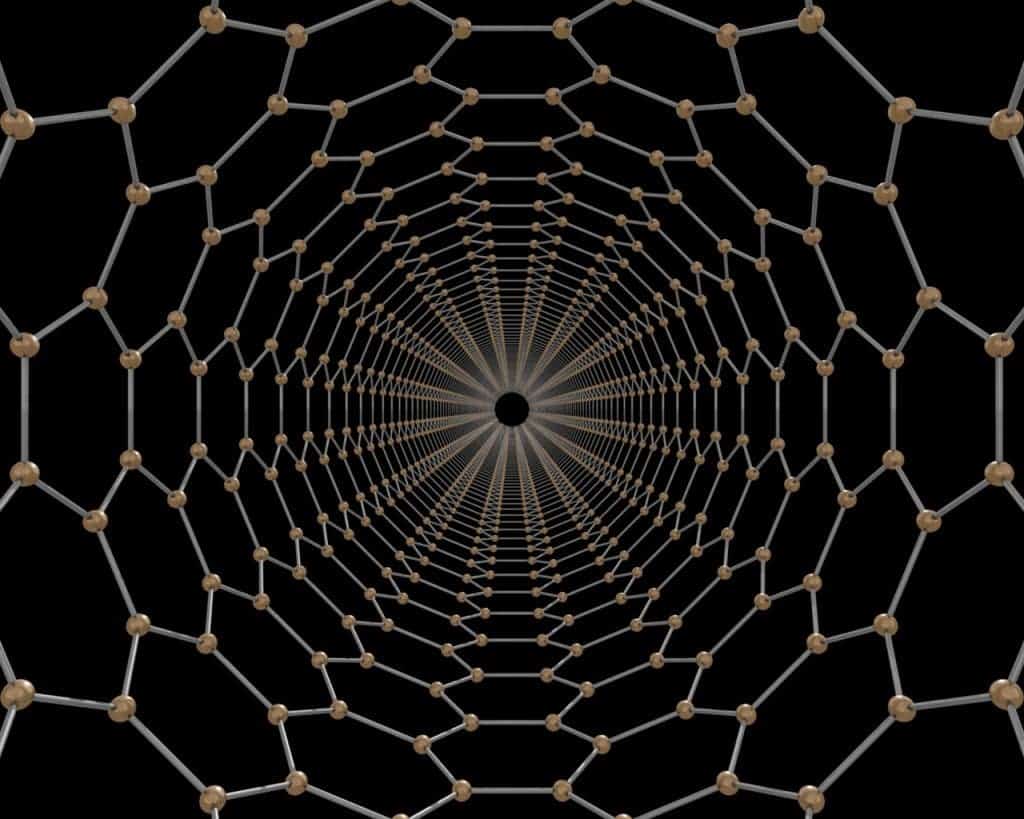Carbon nanotubes are a class of advanced materials that researchers think will transform electronics someday, but while great effort is expended trying to figure out the best way to make them, it appears that our lungs are already littered with them. American and French researchers collected both biological samples from randomly selected asthma patients and swabs from nearby buildings and busy intersections. Eventually they found carbon nanotubes, leading them to believe that the material is expelled throughout the city. The source? Vehicles, it seems, which act like carbon nanotube factories on wheels. Similar findings were detected in samples from Houston, in spider webs in India and in ice cores, suggesting carbon nanotubes are everywhere where automobiles are on the loose.

Of course, carbon nanotubes aren’t metamaterials, those that can’t be found in nature. In fact, they’re quite common being frequently produced by volcanoes, forest fires and other combustion of carbon materials. “All you need is a little catalysis to make carbon nanotubes instead of fullerenes”, says Rice University chemist Lon Wilson. Incidentally, all cars nowadays have catalytic converters that transform noxious carbon monoxide into less harmful gases. “So it is not a big surprise, when you think about it,” Wilson said.
Carbon nanotubes, as the name implies, are extremely thin tube-shaped materials, made of carbon, having a diameter measuring on the nanometer scale. A nanometer is one-billionth of a meter, or about one ten-thousandth of the thickness of a human hair. The graphite layer appears somewhat like a rolled-up chicken wire with a continuous unbroken hexagonal mesh and carbon molecules at the apexes of the hexagons. Carbon nanotubes are extremely sought after because of their amazing properties. For instance you can construct them with length-to-diameter ratio of up to 132,000,000:1! Where they truly sparkle, however, is in their fantastic electrical conductivity properties, so naturally they’re seen as great contenders for the material that will dominate the technological age of tomorrow. Inside the human body, however, they’re not that useful – on the contrary.

Wilson along with colleagues from Paris-Saclay Univ. collected airway macrophages from 69 randomly selected asthma patients aged two to 17 who underwent routine fiber-optic bronchoscopies. These macrophaghes act like filters stopping bacteria and other particle pollution from entering the lungs, and by analyzing them scientists can tell which sort of particle pollution people are exposed to. The team found carbon nanotubes ranging from 10 to 60 nanometers in diameter and up to several hundred nanometers in length, so small that optical microscopes would have missed them. Luckily, the researchers used additional imaging techniques including high-resolution transmission electron microscopy, x-ray spectroscopy, Raman spectroscopy and near-infrared fluorescence microscopy. This was the first time that someone reports carbon nanotubes are found in the lungs of people. They’re everywhere, in fact.
“We collected samples from the exhaust pipes of cars in Paris as well as from busy and non-busy intersections there and found the same type of structures as in the human samples,” Wilson said.
“It’s kind of ironic. In our laboratory, working with carbon nanotubes, we wear facemasks to prevent exactly what we’re seeing in these samples, yet everyone walking around out there in the world probably has at least a small concentration of carbon nanotubes in their lungs,” he said.
So, what does this mean for our health? The researchers didn’t go as far as claiming there’s a connection between asthma and the carbon nanotubes, but they do recognize that these may cause inflammation. Additionally, because these are very slick other pollutants that normally would wind up in the lungs can cling to the carbon nanotubes and enter the airways.
“The concentrations of nanotubes are so low in these samples that it’s hard to believe they would cause asthma, but you never know,” Wilson said. “What surprised me the most was that carbon nanotubes were the major component of the carbonaceous pollution we found in the samples.”






